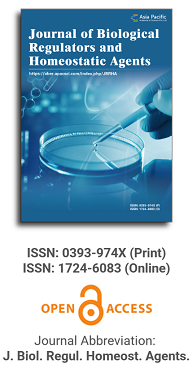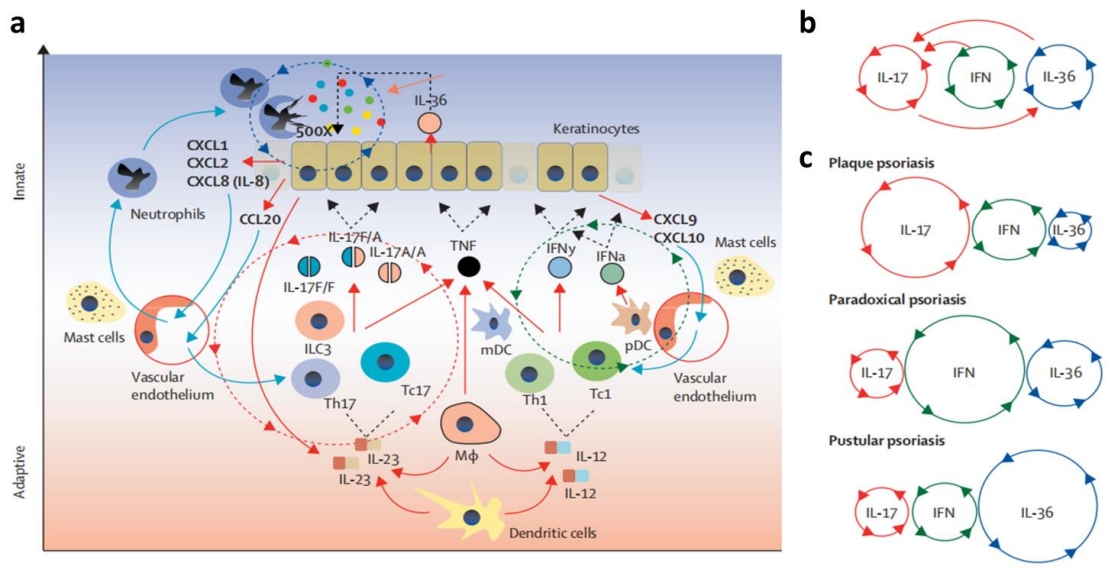
Publication Frequency
Quarterly since 2025
Journal Articles
Search
Search scope
Journal Center
Asia Pacific Academy of Science Pte. Ltd. (APACSCI) specializes in international journal publishing. APACSCI adopts the open access publishing model and provides an important communication bridge for academic groups whose interest fields include engineering, technology, medicine, computer, mathematics, agriculture and forestry, and environment.
Volume Arrangement
2025
Featured Articles

Psoriasis is a common, chronic, and inflammatory skin disease. Macrophages account for about 61.3% of the inflammatory cells infiltrating psoriatic lesions. Modulating macrophage polarization, inhibiting their infiltration, and targeting the secretion of inflammatory factors and associated inflammatory pathways by these cells can alleviate psoriasis symptoms and inflammation. Moreover, nanomaterials as novel drug carriers, offer unique advantages such as large surface area, easy modification, high biocompatibility, good biodegradability, enhanced systemic adsorption, etc. Nanomaterials have great potential for efficient drug delivery and release, as well as improving therapeutic efficacy while reducing adverse effects. By systematically addressing the role of macrophages in psoriasis pathogenesis and the potential of nanomaterials in treating psoriasis through modulating macrophages, this review enhances our understanding of the disease mechanism and holds promise for novel therapeutic breakthroughs and advancements in the future treatment of psoriasis.
Celastrus orbiculatus Extract Inhibits the Malignancy ofNon-Small Cell Lung Cancer Cells ThroughPI3K/AKT/mTOR Pathway
Article ID: 3505
Vol 39, Issue 1, 2025
DOI: https://doi.org/10.23812/j.biol.regul.homeost.agents.20253901.6
Vol 39, Issue 1, 2025
Received: 17 October 2022; Accepted: 9 January 2023; Available online: 16 January 2025; Issue release: 31 January 2025
Download PDF
Abstract
Aim: This study is targeted at investigating the effects of Celastrus orbiculatus extract (COE) on non-small cell lung cancer
(NSCLC) cells.
Methods: At 24, 48 and 72 h after different concentrations of COE were applied to treat NSCLC cells, MTT method, 5-Ethynyl-
2′
-deoxyuridine (EdU) assay, Transwell assay and flow cytometry were conducted to explore the effects of COE at different concentrations on the phenotypes of NSCLC cells. The expression of apoptosis-associated proteins and PI3K/AKT/mTOR-associated
proteins were examined via Western blot.
Results: COE inhibited NSCLC cell multiplication, migration and invasion and facilitated the apoptosis, and this effect was dosedependent. Additionally, also in a dose-dependent manner, COE suppressed Bcl-2 expression and facilitated Bax expression.
After COE treatment, the phosphorylation levels of AKT, mTOR and PI3K were noticeably decreased.
Conclusion: COE suppresses the malignancy of NSCLC cells, probably via inhibiting PI3K/AKT/mTOR signaling.
Keywords
Celastrus orbiculatus extract; PI3K/AKT/mTOR; NSCLC; proliferation
References
Supporting Agencies
Copyright (c) 2025 Xuejiao Yang,Dongdong Zhang,Yan Wei,Yulan Zheng

This site is licensed under a Creative Commons Attribution 4.0 International License (CC BY 4.0).
Editor-in-Chief

Medical Genetics, University of Torino Medical School, Italy
Co-Editor-in-Chief

Department of Biomedical, Surgical and Dental Sciences, University of Milan, Italy
Indexing & Archiving
News & Announcements
2025-02-01
In addition to the first issue that has already been published by the original publisher, there will be four more issues released this year, with scheduled publication dates in March, June, September, and December respectively.
2025-01-21
Starting from Volume 39 Issue 2 (2025), the ownership of Journal of Biological Regulators and Homeostatic Agents (ISSN: 0393-974X (P); 1724-6083 (O)) will be transferred from Biolife Sas to Asia Pacific Academy of Science Pte. Ltd. As of 21 January 2025, authors should make submissions to the new journal system and follow the author guidelines. Asia Pacific Academy of Science Pte. Ltd. will take over the publication of manuscripts being processed.

